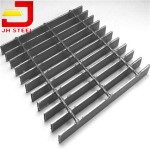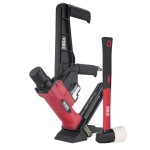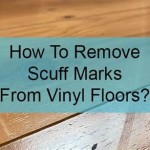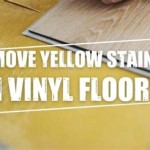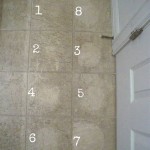Is Vinyl Flooring From Lumber Liquidators Safe?
The question of safety regarding vinyl flooring, specifically that sold by Lumber Liquidators (now LL Flooring), has been a subject of scrutiny and concern for many years. This concern stems from a complex interplay of factors, including the materials used in manufacturing, the potential release of volatile organic compounds (VOCs), and the historical association of Lumber Liquidators with formaldehyde-related controversies involving other flooring products. Understanding the current state of vinyl flooring safety requires a nuanced approach, separating historical issues from present-day practices and considering the relevant regulations and certifications.
Vinyl flooring, broadly, is a resilient flooring option known for its durability, water resistance, and relatively low cost. It comes in various forms, including sheet vinyl, vinyl tiles, and luxury vinyl planks (LVP). The manufacturing process involves combining polyvinyl chloride (PVC) resin with plasticizers, stabilizers, pigments, and other additives to achieve the desired properties. It is these additives, and the manufacturing processes, that can potentially impact the safety of the final product. Understanding the components commonly used in the vinyl flooring production provides a foundation for evaluating potential health risks.
LL Flooring sells a variety of vinyl flooring options. It is crucial for consumers to understand where the flooring is manufactured and what specific certifications that the flooring has achieved. While the company has faced scrutiny in the past, current practices and product offerings may reflect changes implemented to address previous concerns. The safety profile of vinyl flooring from LL Flooring, therefore, necessitates a detailed examination of the sourcing, manufacturing, and testing processes, as well as adherence to established safety standards.
Formaldehyde Concerns and Historical Context
The primary concern regarding the safety of flooring products, including those sold by Lumber Liquidators, has historically centered on formaldehyde emissions. Formaldehyde is a known human carcinogen and can cause respiratory irritation, eye irritation, and other health problems. While vinyl flooring itself does not typically contain formaldehyde in significant amounts, some underlayments or adhesives used in installation might. More significantly, formaldehyde became a concern for Lumber Liquidators specifically in relation to laminate flooring that the company sold.
In 2015, Lumber Liquidators faced significant controversy and legal challenges related to allegations that it sold laminate flooring manufactured in China that did not meet U.S. formaldehyde emission standards, specifically those set by the California Air Resources Board (CARB). This laminate flooring was allegedly labeled as CARB compliant, when in actuality it contained formaldehyde levels exceeding the permissible limits. The ensuing scandal led to widespread product recalls, investigations by regulatory agencies, and a significant decline in the company's reputation. While this issue primarily concerned laminate flooring, it understandably raised concerns about the broader safety and sourcing practices of Lumber Liquidators across all its product lines, including vinyl flooring.
The heightened awareness surrounding formaldehyde emissions prompted stricter regulations and increased scrutiny of flooring products in general. Manufacturers, including those supplying LL Flooring, were compelled to implement more rigorous testing and quality control measures to ensure compliance with formaldehyde emission standards. The negative publicity surrounding the laminate flooring scandal served as a catalyst for change within the flooring industry, prompting a greater emphasis on transparency and consumer safety. It is, therefore, essential to consider this historical context when evaluating the current safety of vinyl flooring from LL Flooring. The company has had to demonstrate a commitment to addressing past shortcomings and rebuilding consumer trust by ensuring its products meet or exceed established safety standards and regulatory requirements.
Volatile Organic Compounds (VOCs) and Vinyl Flooring
Beyond formaldehyde, the release of other volatile organic compounds (VOCs) from vinyl flooring is a significant consideration when assessing its safety. VOCs are organic chemicals that evaporate at room temperature and can contribute to indoor air pollution. Exposure to VOCs can cause a range of health effects, including headaches, respiratory irritation, nausea, and dizziness. The type and concentration of VOCs emitted from vinyl flooring can vary depending on the specific materials used in its manufacture and the manufacturing processes employed.
Plasticizers, a common component of vinyl flooring, are a frequent source of VOC emissions. Phthalates, a class of plasticizers previously widely used in vinyl flooring, have been linked to adverse health effects and are now subject to increasing regulation. While many manufacturers have transitioned to phthalate-free plasticizers, it's important to confirm that the specific vinyl flooring product being considered is indeed free of these potentially harmful chemicals. Other VOCs that may be present in vinyl flooring include solvents, adhesives, and stabilizers. The emission of these VOCs typically decreases over time as the flooring off-gasses after installation.
To mitigate the risks associated with VOC emissions, it is advisable to choose vinyl flooring products that have been tested and certified by independent organizations. Certifications such as FloorScore, GreenGuard, and UL GREENGUARD Gold indicate that the product has been tested for VOC emissions and meets established standards for indoor air quality. These certifications provide consumers with assurance that the product emits low levels of VOCs and is suitable for use in homes, schools, and other indoor environments. Furthermore, ensuring proper ventilation during and after installation can help to reduce VOC concentrations and minimize potential health effects.
Current Regulations, Certifications, and Due Diligence
The safety of vinyl flooring is regulated by various governmental agencies and industry organizations. In the United States, the California Air Resources Board (CARB) has established strict formaldehyde emission standards for composite wood products, including those used in flooring. While CARB regulations primarily target formaldehyde, they have indirectly influenced the broader flooring industry to adopt more responsible manufacturing practices and prioritize indoor air quality. The U.S. Environmental Protection Agency (EPA) also plays a role in regulating VOC emissions and ensuring the safety of consumer products, including flooring. While a federal standard for VOC emissions from flooring doesn't exist at the same level as CARB's formaldehyde standards, the EPA sets general guidelines for indoor air quality.
As previously mentioned, certifications from independent organizations such as FloorScore, GreenGuard, and UL GREENGUARD Gold provide additional assurance regarding the safety of vinyl flooring. These certifications are based on rigorous testing protocols that assess VOC emissions and ensure compliance with established standards. Consumers should look for these certifications when selecting vinyl flooring to minimize potential health risks. In addition to these third-party certifications, manufacturers themselves may conduct internal testing and quality control measures to ensure the safety of their products. Transparency regarding testing procedures and results is a positive indicator of a manufacturer's commitment to safety.
Ultimately, determining the safety of vinyl flooring from LL Flooring requires diligent research and careful consideration. Consumers should contact LL Flooring or consult the manufacturer's website to obtain detailed information about the product's composition, manufacturing processes, and certifications. Requesting Safety Data Sheets (SDS) can provide valuable information about the chemicals used in the product and their potential health effects. Reading product reviews and conducting independent research can also help to assess the safety and performance of specific vinyl flooring options. It is important to weigh the potential benefits of vinyl flooring, such as its durability and water resistance, against the potential risks associated with VOC emissions and other chemical exposures. By taking a proactive approach to research and due diligence, consumers can make informed decisions and choose vinyl flooring products that meet their safety requirements and provide a healthy indoor environment.

Are Vinyl Floors Toxic Olde Tyme Floor

Lumber Liquidators Linked To Health And Safety Violations Cbs News

Over 100 Toxic Lumber Liquidators Flooring Claims Filed

Lumber Liquidators Customers Still Testing Laminate Floors For Formaldehyde Cbs News

Are Vinyl Floors Toxic Olde Tyme Floor

Lumber Liquidators To Halt Of Vinyl Flooring Using Recycled Plastics News

Tranquility Ultra 5mm River Walk Oak Waterproof Luxury Vinyl Plank Flooring 6 In Wide X 48 Long Ll

Is Fake Wood Flooring From China Killing You Or Just Your Investments Thestreet

Luxury Vinyl Plank Flooring Ll

Luxury Vinyl Msi Prescott Akadia Flooring Liquidators
Related Posts

